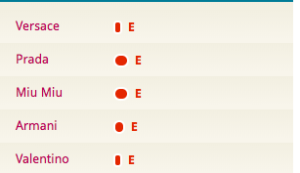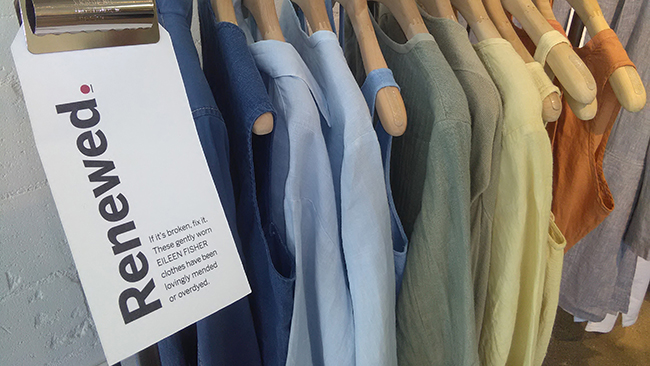The tradition of Italian Fashion practice
Italian fashion has always been extremely well-regarded. It is known for its careful production and regional materials, providing genuine elegance and national pride. Italy did not participate in the first wave of industrialization in the nineteenth century, leaving Italian design to be dominated by small companies, which were commonly family-owned. As the economy grew, companies gained more power and more ability to experiment with design, allowing for Italian makers to still be innovative and well-renown. Italy is still regarded as one of the leading countries in fashion design, and even though manufacturing and production may have shifted to accommodate buyer needs, the thought of a product being “Made in Italy” still reminds consumers of carefully crafted, innovative, goods, which go above and beyond meeting a consumer’s needs.
Fast Fashion Now
American fashion, unfortunately, is not regarded in the same luxurious way. This may be due to the abundance of fast fashion, cheaply-made clothing that is quickly produced at low prices in order to satisfy customer demand and the desire for affordability. In theory, for those who are intrigued by fashion and love a plethora of styles and dressing opportunities, this is a wonderful thing. However, the behind-the-scenes actions taken to keep costs low are detrimental to our environment and horrifyingly unethical. Additionally, the abundance of clothing that is produced at such a low cost encourages over consumption, leading to extreme textile waste. Common, cheap, materials such as polyester, which is man-made, are made of non-biodegradable materials, inevitably creating waste. Polyester also requires an immense amount of energy to create. Cotton, a very standard material in most shirts, jeans, pants, and more, requires tons upon tons of water consumption to produce, making up over 70% of water consumption in the industry. The workers in textile factories abroad are kept in extremely poor, sweatshop conditions, working in tight-spaces with poor ventilation, forced to breathe in air concentrated with chemical dyes and fumes. These often toxic dyes are also secreted into natural water sources once fashion is improperly disposed of, collecting in waste piles, impacting the innocent lives of those living in surrounding villages. The impact of fast fashion is one that many are not aware of, but constantly contributing to in their daily purchases.
Italian Luxury Brands Now
This problem is not specific to US brands. All fashion brands can be evaluated in terms of their eco-consciousness. Some of the most famous Italian fashion brands, such as Valentino, Versace, Prada, and Armani, have been rated in terms of their environmental impact and ethical treatment of employees, and have received the following critiques and ratings from the websites “rankabrand.org” and “goononyou.eco”. Both of these websites are easy ways to assess commonly purchased brands. Valentino receives very poor ratings, mainly due to the failure to communicate environmental policy, and lack of commitment to its employment code of conduct, and production in low-wage countries. Versace receives similar ratings, specifically having to do with its resistance to follow standards set by Greenpeace’s “Detox” campaign, with motives to eliminate hazardous chemicals. Prada also receives similar ratings, although being commended for its efforts to reduce energy consumption and working towards 100% renewable energy, although with no outlined plan of doing so. Armani has taken some steps to reduce environmental impact, such as establishing a deadline of 2020 to eliminate hazardous chemicals. However, this is all it has promised so far.

Struggles Sustainable Fashion Faces
Sustainable fashion, clothing production that favors the upkeep of our natural environment and fair treatment of workers, is a simple solution to these horrifying problems faced in the industry. However, start-up brands in this sector still face many difficulties, and no brands designated to be sustainable are household names. I spoke to Carmen Gama, a designer at Eileen Fisher RENEW, a take-back program accepting worn and torn Eileen Fisher garments and turning them into brand new, wearable designs, who said the main barriers the company faces due to the commitment to sustainability was that “cost of goods and production are higher, making it hard to be accessible to different demographics”. Meagan Neville, founder of Workspace Collective, a curated collection of sustainable products expanded on this, describing the struggles with marketing of products pertaining to storytelling. “When I’m selling $40 t-shirts, and $80 jeans, I have to tell a story of why and explain so people know they are buying something great, so it’s important to weave that educational aspect in.” Meagan also described the differences in design for sustainable and typical, fast fashion brands, as she has experience in product development at Macy’s, Inc., under Style&Co., Charter Club, and Alfani, in addition to a plethora of smaller, sustainable, ethically-focused companies. She said, “there was no room for creative expression working with Macy’s, it was lifestyle branding, so you were given a customer to create for, who liked consistency, so it was so stagnant. Whereas, with fair trade brands, your shopper was someone who was a little more expressive, and willing to be more adventurous with their style, so it was fun to create for that customer.” Both designers favored the intent and creation of sustainable design, despite these struggles.


Different certificates of sustainability and ethics
While the message and gravity of the situation is relatively easy to understand, it may be hard to navigate how one can go forward supporting and celebrating the correct brands, evaluating their environmental impact. As we saw with Italian luxury brands, great impacts and poor conditions can be disguised by a high price tag, eliminating the price of a good as an indicator of quality of production. It is also hard to define the threshold of “good enough”, in terms of policy. Meagan Neville’s standards for the companies she sells are: “utilizing upcycled or repurposed material, natural fibers, artisan-made products preserving cultural tradition, utilizing fair trade or it is documented that workers are paid fair wages and work in safe conditions, and made in USA supporting local production”. To sell a brand in her collection, she requires that they meet at least two of these criteria. The average customer can look for brands that are B-corp certified, showing the highest standards of social and environmental performance and transparency. Additionally, websites and databases such as “goodonyou” and “rankabrand” allow for the easy assessment of any brand. Sustainable fashion may pose barriers in terms of marketing and design, but armed with the correct resources, consumers are capable of supporting companies that are helping to improve the standards of human-environment interaction and the treatment of workers.
Sources:
Maffei-Fallan Made in Italy
Goodonyou.eco
Rankabrand.org
